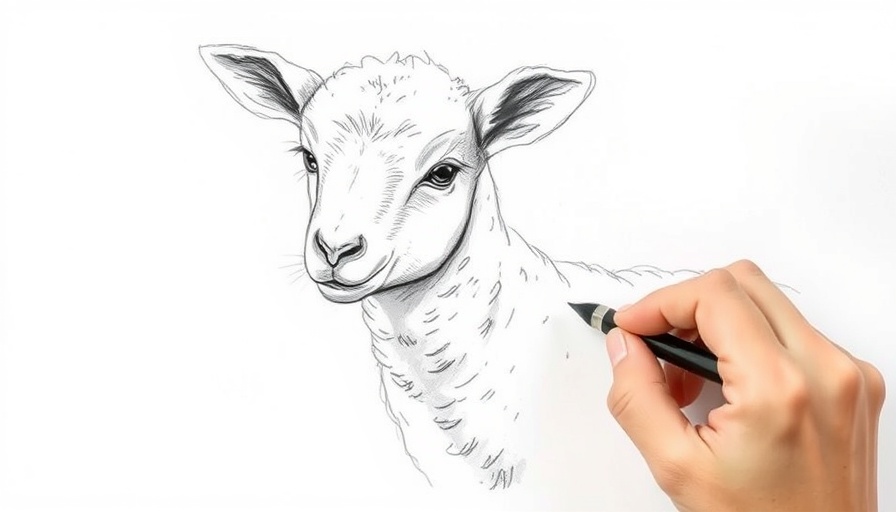
Exploring the Elements: Understanding God’s Presence
Fire and wind are often symbols of divine presence throughout many faith traditions, but in the context of the Seventh-day Adventist (SDA) faith, these elements hold deeper layers of meaning. In the Bible, fire represents God's purity and holiness, as seen in the burning bush encountered by Moses and the fiery pillar that led the Israelites through the wilderness. Meanwhile, wind is often a metaphor for the Holy Spirit, illustrating how God moves through the world and our lives. The melding of fire and wind signifies the profound encounter with the divine, enriching our spiritual understanding of God’s active presence in our lives.
In 'Fire + Wind = God’s Presence + Formation of a Temple', the discussion dives into the profound significance of these elements, exploring key insights that sparked deeper analysis on our end.
The Significance of Temples in Our Faith
The temple serves as a central household of God in the SDA tradition, a place to encounter the divine through worship and community. Temples are not just structures but representations of our hearts and lives surrendered to God. They symbolize the merging of the sacred and secular; just as fire ascends and wind whispers, the temple invites us to welcome God into our daily lives. This divine dwelling places an emphasis on worshiping in spirit and truth, encouraging believers to view every space in their lives as potential sacred ground.
Lessons from Biblical Fire and Wind
In reflecting on fire and wind, we can draw parallels from their powerful qualities. Fire is both destructive and purifying, much like the trials and tribulations we endure in our daily lives. It can remove impurities from gold, just as our spiritual challenges refine our faith. Wind, too, can be gentle or fierce, reminding us of the unpredictable nature of life. Recognizing these elements' dual nature allows us to approach our spiritual journey with resilience, knowing that both calm and chaos contribute to our formation as beings created in God’s image.
What the Community Can Learn from God's Presence
In the SDA faith, community worship is integral to personal and spiritual growth. When we gather in temples, we unite our voices and spirits in acknowledging God's presence through shared experiences. Whether through testimonies or prayers, each moment spent in community reinforces faith, compassion, and understanding of God’s continual work in our lives. Fire and wind can serve as reminders of the need for community; our faith is not just a solitary journey but one that thrives in fellowship.
Fostering Spiritual and Physical Well-being
This divine interplay between fire and wind also resonates with our approaches to health and well-being. Just as we seek spiritual fulfillment, we must also nurture our physical health. In a fast-paced world, we need to cultivate practices that enhance our overall wellness. Engaging in community fitness programs or mindfulness activities helps us maintain balance in our lives, allowing us to express gratitude and promote a healthy lifestyle in tandem with our faith.
Steps to Embrace God’s Presence Through Action
As we explore how fire and wind symbolize God’s presence and formation of a temple, let us remember the calls to action that this understanding provides. How can we embody these lessons in our daily lives? Here are some practical tips that align with the themes of fire, wind, and temple worship:
- Create Sacred Spaces: Designate areas in your home for prayer and meditation to cultivate daily spiritual practices.
- Engage in Group Activities: Join local SDA groups participating in health, fitness, or community outreach to encourage physical and spiritual growth.
- Reflect on Nature: Spend time outdoors, appreciating the elements of fire and wind, and how they relate to your spiritual journey.
- Practice Mindfulness: Incorporate mindfulness and gratitude into your daily routine to recognize God’s presence in the everyday.
Final Thoughts: Embracing a Holistic Approach to Faith
In conclusion, the message of our faith is enriched by understanding the symbolism of fire and wind as a means of celebrating God's presence in our lives and communities. The formation of temples represents the sacred spaces in our hearts, where we can draw closer to God and promote holistic well-being. By actively engaging with our spiritual and physical health, we can find a balanced path toward fulfillment rooted in divine love.
As members of the SDA community, let us take these insights to heart, taking proactive steps to enhance our spiritual and physical lives.
We invite you to reflect on how you can incorporate the lessons of fire and wind into your daily living. Join us in this journey as we explore greater depths of faith and well-being!
 Add Row
Add Row  Add
Add 




Write A Comment